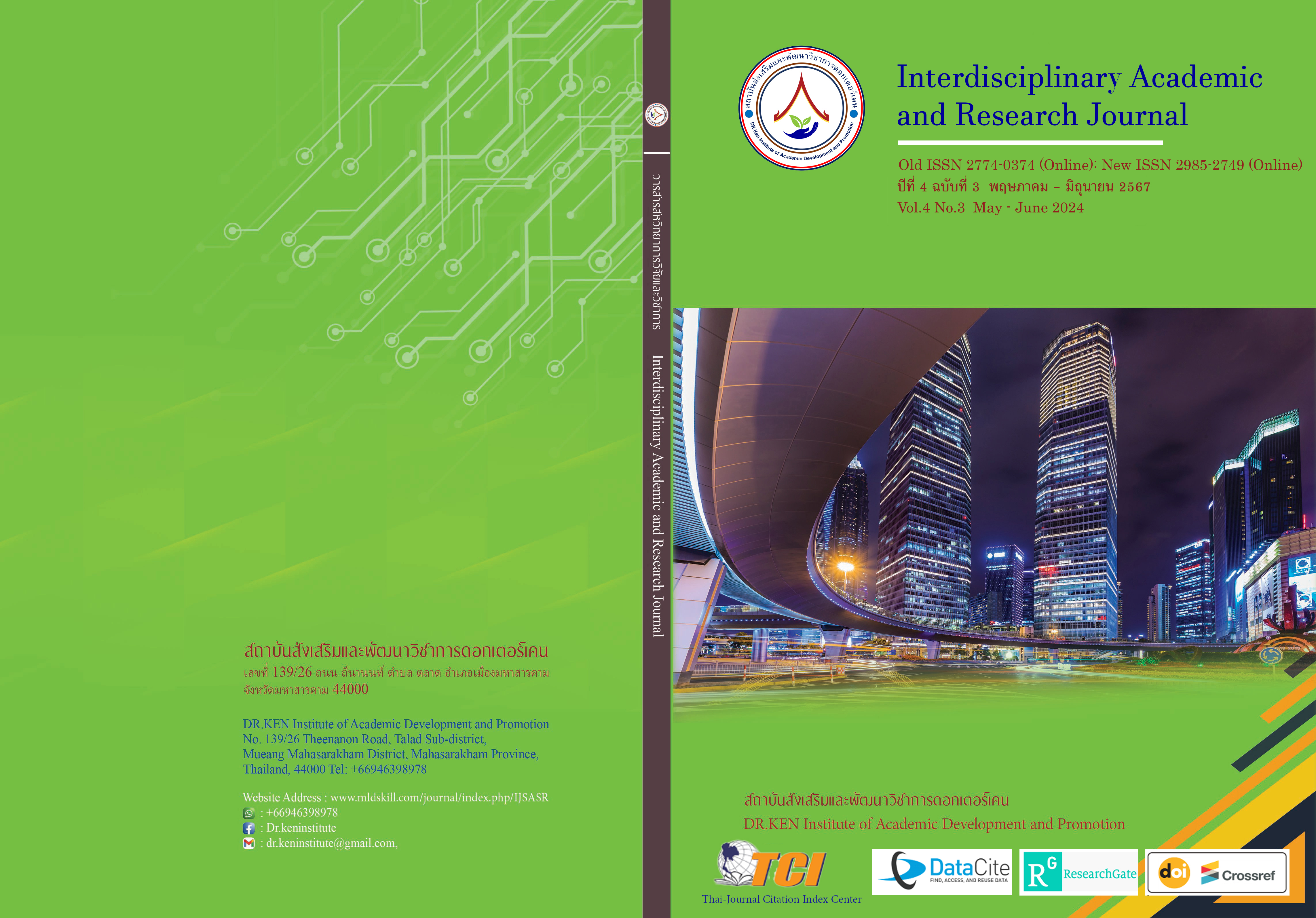Negotiation of Meaning Strategies to Improve English Conversations between EFL University Students and a Native Speaker
DOI:
https://doi.org/10.60027/iarj.2024.275696Keywords:
Negotiation of Meaning Strategy; , Clarification Requests; , Confirmation Checks; , Paraphrasing and SimplifyingAbstract
Background and Aims: In English conversations, where interlocutors may have differing language backgrounds or proficiency levels, effective communication relies on employing negotiation of meaning strategies to ensure mutual understanding and clarity. The purpose of this study was to examine the negotiation of meaning strategies used by EFL university students in conversation with a native speaker, highlighting their importance in achieving effective communication and linguistic development.
Methodology: Qualitative data were collected through recorded conversations in an academic setting, involving 20 EFL university students and a native speaker and were analyzed using conversation analysis.
Results: The study identified the top five negotiations of meaning strategies, with clarification requests and confirmation checks being most prevalent, indicating a strong preference for direct engagement in ensuring mutual understanding.
Conclusion: The findings emphasized the importance of incorporating targeted negotiation of meaning exercises into EFL curricula to improve students' communicative competence and cross-cultural understanding.
References
Bardovi-Harlig, K., & Bastos, M.T. (2011). Proficiency, length of stay, and intensity of interaction, and the acquisition of conventional expressions in L2 pragmatics. Intercultural Pragmatics, 8(3), 347–384.
Canale, M., & Swain, M. (1980). Theoretical bases of communicative approaches to second language teaching and testing. Applied Linguistics, 1(1), 1-47.
Chen, H.I., & Sevilla-Pavon, A. (2023). Negotiation of meaning via virtual exchange in immersive virtual reality environments. Language Learning & Technology, 27(2), 118-154.
Ellis, R. (1994). The study of second language acquisition. Oxford University Press.
Gass, S.M., & Varonis, E.M. (1994). Input, interaction, and second language acquisition. The Modern Language Journal, 78(3), 376-387.
Hymes, D. (1972). On communicative competence. In Pride, J., & Holmes, J., Sociolinguistics: Selected readings (pp. 269-293). Harmondsworth: Penguin Books.
Kasper, G., & Rose, K.R. (2002). Pragmatic development in a second language. Malden, MA: Blackwell.
Lai, Y., & Zhao, Y. (2019). Negotiation of meaning strategies in task-based language learning: A systematic review. Language Teaching, 52(4), 503-524.
Lee, H., & Hampel, R. (2023). Geosemiotics as a multiperspective lens: Theorizing L2 use of semiotic resources in the negotiation of meaning with mobiles from outside the classroom. Language Learning & Technology, 27(2), 46-71.
Lin, Y., & Chin, C. (2021). Exploring the effectiveness of negotiation of meaning strategies in communicative language teaching. TESOL Quarterly, 55(2), 325-348.
Long, M. H. (1983a). Linguistic and conversational adjustments to nonnative speakers. Studies in Second Language Acquisition, 5, 177-194.
Long, M. H. (1983b). Native speaker/nonnative speaker conversation in the second language classroom. In M. Clarke, & J. Handscombe, TESOL’82, Pacific Perspectives on Language Learning and Teaching (pp. 207-225).
Long, M. H. (1996). The role of the linguistic environment in second language acquisition. Handbook of second language acquisition, 2, 413-468.
Lustig, M.W., & Koester, J. (2010). Intercultural competence: Interpersonal communication across cultures. Pearson.
Mingkwan, W., Klaisingto, P., & Teeranon, P. (2022). An analysis of negotiation of meaning strategies in the English conversation from textbooks. Journal of Humanities and Social Sciences University of Phayao, 10(1), 143-157.
Park, S., & Kim, J. (2022). Technology-mediated negotiation of meaning in language learning: A systematic review. Educational Technology Research and Development, 70(1), 129-150.
Pica, T. (1994). Research on negotiation: What does it reveal about second-language learning conditions, processes, and outcomes? Language Learning, 44(3), 493-527.
Pica, T., Holliday, L., Lewis, N., & Morgenthaler, L. (1989). Comprehensible output as an outcome of linguistic demands on the learner. Studies in Second Language Acquisition, 11, 63–90.
Selinker, L. (1979). Interlanguage. In R. Gingras, Second language acquisition and foreign language teaching (pp. 13-29). Centre for Applied Linguistics.
Swain, M. (1985). Communicative competence: Some roles of comprehensible input and comprehensible output in its development. Input in second language acquisition, 5, 165-179.
Varonis, E.M., & Gass, S. (1985). Non‐native/non‐native conversations: A model for negotiation of meaning. Applied Linguistics, 6(1), 71-90.
Downloads
Published
How to Cite
Issue
Section
License
Copyright (c) 2024 Interdisciplinary Academic and Research Journal

This work is licensed under a Creative Commons Attribution-NonCommercial-NoDerivatives 4.0 International License.
Copyright on any article in the Interdisciplinary Academic and Research Journal is retained by the author(s) under the under the Creative Commons Attribution-NonCommercial-NoDerivatives 4.0 International License. Permission to use text, content, images, etc. of publication. Any user to read, download, copy, distribute, print, search, or link to the full texts of articles, crawl them for indexing, pass them as data to software, or use them for any other lawful purpose. But do not use it for commercial use or with the intent to benefit any business.
















.png)


